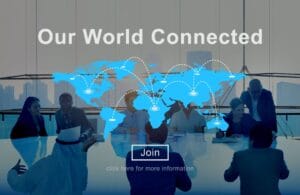Our World have moved forward significantly during the pandemic.
Human Resources are pushed to redefine itself and its purpose. Apart from the challenges of managing the remote working environment, employee’s expectation are also ever changing.
The Society for Human Resource Management (SHRM) put it, “Tomorrow’s HR leaders will need to be bigger, broader thinkers, and they’ll have to be tech-savvy and nimble enough to deal with an increasingly agile and restless workforce.”
Here are some strategies to help your organisation’s HR evolve and be ready for the future of work.
Future of Employee Satisfaction

Employee satisfaction is an important factor for employee engagement and retention rates. Employee satisfaction, however has evolved considerably over the last decade. Some of the perks that were once special (e.g. remote working, company picnics and free food) are now requirements in the working world.
When do we draw a line? Do we raise the threshold of material benefits or perks—until they become another hiring ‘requirement’ as well in the future?
This could work, but in the long run would create an ecosystem wherein organizations will hurt their own ROI just to retain employees who are merely in it for the benefits. Therefore, this is a method that can only go so far.
Rather than relying on material benefits or perks, HR leaders should prioritize creating inclusive work environments. Being inclusive meaning, an environment in which every employee is given a chance to contribute and fulfill their fullest potential. When employees are welcomed to participate in decision-making at work, their engagement increases—so does the employment retention.
Future of HR Skills & Functions

Human resources are traditionally ‘task-oriented’. They are responsible for recruiting, screening, interviewing, onboarding, as well as payroll, benefits, training, and paperwork related to employees. These task-oriented skills and functions no longer serve the future of work; especially when it comes to employee satisfaction (as explained above). To evolve, HR needs to be ‘service-oriented’.
To achieve a smooth transition from “task-oriented” to ‘service-oriented’, HR leaders will have to come up with methods to enhance a positive work culture. Methods should include employee empowerment, realistic goal-setting as well as a transparent communication between managers and employees. Most HR find this less of a priority, as ‘service-oriented’ doesn’t seem to bring in ROI directly and immediately.
However, as HR leaders, you should well understand the effects of employee retention in the long run. Being ‘service-oriented’ does not only lead to happier employees who will have more passion and positive, but also leads to the workforce delivering better results, which will in turn reap more benefits for the organization as a whole.
Sense of Community

Building a sense of community is one of the best ways to instill engagement and belongingness among employees. With the pandemic shaping the current trend of remote working, it can be a challenge for HR leaders to instill a sense of community. Which is why, the implementation of technology is more important now than ever. Besides communicating with employees frequently about daily work-related issues, involving them in decision making, company direction and result ownership can also instill the sense of community and belongingness to the organization.
Utilizing the power of technology to connect and include employees into existing workflows, processes, and projects of any kind has never been easier with technology such as Zoom, Slacks, ADAMS, PeopleX and etc.
Employee’s Individual Purpose

If individuals aren’t clear about their own purposes, a career becomes a meaningless hustle. We don’t want employees to be ‘husks’, we want employees to be empowered and individuals who are clear about their own purpose. Not only that employees will have way better work life satisfaction, but organization will gain more from employees who are always internally motivated and resourceful.
First off, help all employees to understand the purpose of your organisation. For example, why does it exist? What is the goal of your organisation? Do you share the same values? When employees understand the purpose of your organisation, it will be easier to explore their own individual purposes and see where they fit in within your organisation.
Quarterly Appraisal for Employee wellbeing must be carried out with your employees individually and see where they’d like to be fitted within your organisation. As mentioned above, communication is key. Also, by fitting the right employee where they belong will give them a sense of community and belongingness too. Ultimately this will create a win-win situation for all parties: happy employees with great job satisfaction and an organisation filled with a loyal and productive workforce.
Modern HR leaders are specialists who evolved into ambassadors of organisational mission, vision, values and goals, aiding in the global success of their respective workforce. However, as we all know, managing HR work requires a lot of time on paperwork, manual organizing, and much more laborious processing that will take up the majority of time and attention away from taking steps to evolve. This is where technology comes in: PeopleX. We’re able to help HR digitalised all of the manual processes such as payroll management, recruitment, organised filing system, and much more.
Now your team will have more opportunities to focus on evolving, while we take care of the tedious aspect of HR’s workload.
So are you ready to evolve or become dinosaurs?





